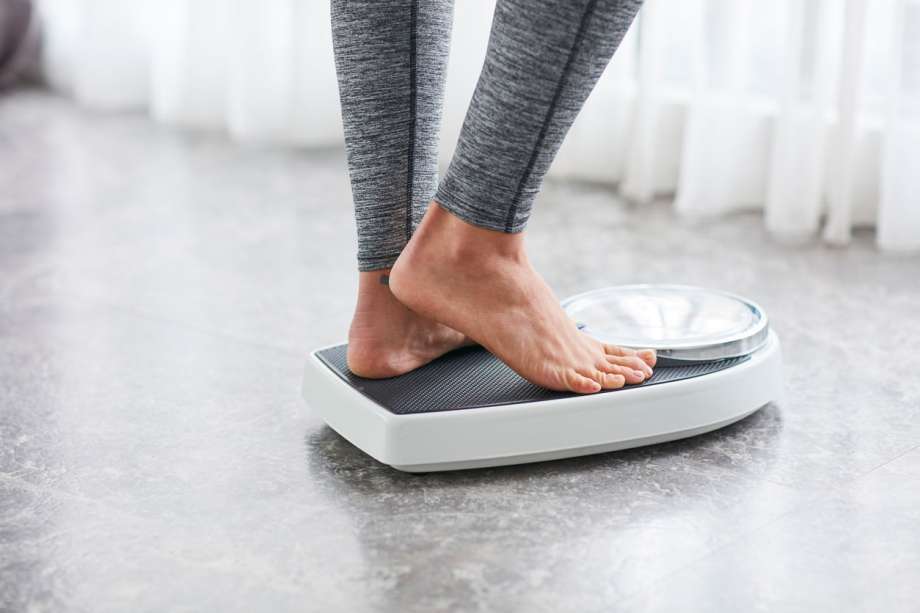What's a Normal BMI for Women? (Explaining Weight and Body Fat Percentage)

If you're trying to lose weight while trying to gain muscle mass, and figure out how to do it all while still maintaining good overall health, you're not alone. Understanding what your healthy range should be when it comes to normal weight and your BMI (Body Mass Index) can get confusing.
That's why we've sorted it all out for you with the help of The Active Woman's Health and Fitness Handbook and some handy charts.
More: Setting Realistic Weight Loss Goals
Body Weight vs. BMI: What's the Difference?
When you're talking about body composition, there are three things to look at to get the big picture of your overall health. According to the National Institutes of Health, body weight, stature, and Body Mass Index are the most commonly used factors to measure your body composition.
Body Weight
Stepping on a scale can measure your body weight. Weight changes can correspond to changes in body water, body fat, and/or lean tissue. But, when you're talking about bodyweight, you want to consider other factors. This is why Body Mass Index (BMI) is also looked at.
Body Mass Index (BMI)
BMI is a measure of body fat based on height and weight. This differs only from weight in that it adjusts for height; BMI also varies with body fluids.
While some people criticize using BMI as a guideline to measure health, studies have shown that a person's risk of premature death and chronic disease increases with a BMI under 18.5 or greater than 30. A lower BMI categorizes someone as "underweight" while the higher end of the scale is a marker for obesity. A BMI of between 18 and 25 is considered normal.
Since lean muscle weighs more than a person's body fat, an athletic woman may seem "overweight" by BMI standards, but in reality, is healthier than someone with a lower BMI who has a higher percent body fat than lean body mass. This is why it's important to look at the whole picture to determine overall health.
Body Fat Standards for Women Recommended by Age Group
| 20 to 29 | 30 to 39 | 40 to 49 | 50 to 59 | 69+ | |
| Very low | <16 | <17 | <18 | <19 | <20 |
| Low | 16-19 | 17-20 | 18-21 | 19-22 | 20-23 |
| Optimal | 20-28 | 21-29 | 22-30 | 23-31 | 24-32 |
| Moderately high | 29-31 | 30-32 | 31-33 | 32-33 | 33-35 |
| High | >31 | >32 | >33 | >34 | >35 |
Body Fat Percentile

Many believe that body fat percentile provides a more accurate picture of total body composition. Body fat percentile is an indication of the percent of your body that is made of fat. The healthy range of body fat for men is typically defined as 8-19%, while the healthy range for women is 21-33%
In women, below 17 is considered extremely low body fat; between 30 to 33, high body fat; and above 34, extremely high body fat or obese. The recommended healthy body fat percentiles increase slightly with age.
How to Measure Body Fat Percentile
Body fat percentile can be measured in a variety of ways. The most accurate is through a DEXA scan. A DEXA scan is done in a radiology lab or by your healthcare provider in their office. This is the same radiographic measurement used to determine bone density. It uses low-level x-rays to determine the amount of body fat, muscle, and bone mass in your body. DEXA scans are quick and are often favored because they consider bone mass when comparing body fat to muscle mass.
One of the simplest, most common measures of body fat percentile measurement is using skinfold measurements. A tester uses calipers to measure fat pinches at various sites on the body. Skinfold calipers can be used to measure belly fat as well as fat on the arms and other parts of the body. This method greatly depends on the tester's skills. If done by an experienced tester, it can be up to 93 percent accurate. If someone is less experienced, you can expect that number to go down.
Another method is water displacement. This can be a bit impractical because it requires underwater weighing in a special tank. This method works under the idea that when you're underwater, lean tissue sinks, and fat floats. Your underwater weight can be used to determine how much fat mass you carry.
Bioelectrical impedance is another way to measure body fat percentile. This measures the speed of an electrical current as it passes through your body. Its accuracy depends on factors like hydration, stomach fullness, and how recently someone has exercised. There are bioelectrical impedance scales that you can buy to track your body fat percentage at home. But, these scales may not be the most accurate. Bioelectric impedance analysis is even less accurate in athletes with a large amount of muscle.
All these measurements are interesting and can suggest health, but should not be the basis of an exercise or nutrition regime. Remember, if you are using weight as your guide, muscle weighs more than fat. If you are increasing strength but not changing your weight, you are becoming leaner.
The following are loose guidelines for healthy weights in athletic women. The lower numbers are for petite, small-boned, less-muscled frames; the higher numbers accommodate for large bones and bigger muscle size.
Healthy Weight Guidelines for Muscular, Athletic Women (BMI 18 to 25)
| Height (Inches) | Recommended Weight (Pounds) |
| 4'10" | 95 to 123 |
| 4'11" | 98 to 128 |
| 5' | 101 to 132 |
| 5'1" | 105 to 136 |
| 5'2" | 108 to 141 |
| 5'3" | 112 to 146 |
| 5'4" | 115 to 150 |
| 5'5" | 119 to 155 |
| 5'6" | 123 to 160 |
| 5'7" | 126 to 165 |
| 5'8" | 130 to 170 |
| 5'9" | 134 to 175 |
| 5'10" | 138 to 180 |
| 5'11" | 142 to 185 |
| 6' | 147 to 190 |
| 6'1" | 152 to 196 |
| 6'2" | 157 to 201 |
More: Diets: Bad, Fair, Good
Health Risks of Not Being a "Normal Body Fat Percentage"
While we've seen that many factors go into determining body composition, there are health risks if you are truly obese. If you look at all of your numbers collectively and your healthcare provider determines that you are obese and are not where you need to be in terms of ideal body fat, you're going to want to make some life changes to improve your health.
According to Harvard Health, excess body fat can lead to several health problems including:
- High blood pressure
- Heart attack and other cardiovascular problems
- Stroke
- Depression
- Fatty Liver
- Osteoarthritis
- Type 2 Diabetes
Many people assume that only people with a high BMI can face health problems. But, others who fall under the umbrella of being "skinny fat" can also face the health problems that we mentioned above. Those who are "skinny fat" have a relatively high percentage of body fat and a low amount of muscle mass. They may have a "normal BMI" but are still at risk for developing diabetes and heart disease due to their body fat.
Healthy and Safe Weight Management

The best weight changes are made slowly. The slower changes are made, the more likely your body will maintain the change, as it tends to return to its "steady-state," or the weight it has been at for the longest.
According to the CDC, people who lose weight at a rate of 1-2 pounds per week are more successful at keeping the weight off. You can lose weight by burning off more calories than you consume.
You can gain one pound by eating 3,500 more calories than your body burns. So to lose that pound, you need to eat 3,500 fewer calories or burn off 3,500 more calories.
The best way to gain or lose is to change your dietary calorie intake by 500 kcal a day. This should equal a one-pound weight loss or gain per week. Keeping a food diary for seven days can make you more aware of your eating habits and strategize change in a healthy way.
Experts also suggest:
- A regular exercise routine to manage weight
- Portion control (know what standard serving sizes are and adhere to those)
- Identifying habits that lead to unhealthy eating
- Eating slowly
Nutritionists and support groups can be very helpful in reaching goals for weight changes. And speaking of nutrition, check out our tips for sticking to a healthy diet when you're a parent on the go!

